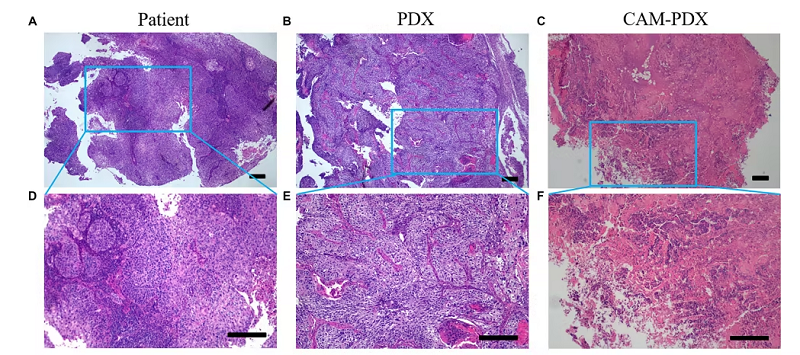New Breakthrough in The Treatment of Cervical Cancer!
Cervical cancer is one of the most common gynecological malignancies in women worldwide. Its incidence rate is second only to breast cancer and ranks third among cancer-related deaths in women. After standardized treatment, the cure rate of early cervical cancer patients can reach 60% to 90%, but the five-year survival rate of patients with advanced or recurrent cervical cancer is only 16.5%.
Human papillomavirus (HPV) infection, low immune system function, and overexpression of vascular endothelial growth factor (VEGF) are closely related to the occurrence and development of cervical cancer. Although traditional treatments such as surgery, radiotherapy and chemotherapy have been continuously improved, their efficacy is still unsatisfactory. Therefore, it is particularly urgent to explore new treatment strategies.
Recently, a research report titled "Andrographolide suppresses cervical cancer progression by targeting angiogenesis and inducing apoptosis in a CAM-PDX model" published in Biomolecules and Biomedicine found that a compound called andrographolide (AND) extracted from Andrographis paniculata may effectively slow the growth of cervical cancer in preclinical models.
Andrographolide has multiple pharmacological effects such as anti-tumor, anti-viral, and anti-inflammatory. In recent years, its potential in inhibiting the growth and metastasis of various cancer cells has gradually attracted attention, but its mechanism of action in the treatment of cervical cancer is still unclear. In order to further explore the therapeutic effect of andrographolide on cervical cancer, a new model, the chicken embryo chorioallantoic membrane patient-derived xenograft (CAM-PDX) model, was used. This model combines the advantages of patient-derived xenografts (PDX) and chicken embryo chorioallantoic membrane (CAM), which can effectively simulate the growth properties of human tumors while reducing experimental costs and improving experimental efficiency.
The researchers obtained tumor tissue samples from a 55-year-old female patient diagnosed with cervical squamous cell carcinoma (SCC) and implanted them into nude mice to successfully establish a PDX model; they then transplanted the tumor tissue in the PDX model onto the CAM of chicken embryos to establish a CAM-PDX model. The model was validated through hematoxylin–eosin (H&E) staining and immunohistochemistry, which confirmed its ability to accurately replicate the histological and molecular characteristics of patient-derived xenografts (PDXs), establishing its reliability for therapeutic screening.
 Fig. 1. Morphological comparison of patient-derived SCC, PDX, and CAM-PDX models using H&E staining.
Fig. 1. Morphological comparison of patient-derived SCC, PDX, and CAM-PDX models using H&E staining.
The experimental results showed that andrographolide could significantly inhibit tumor growth at a dose of 20 mg/kg, mainly by reducing angiogenesis and vascular density. Immunohistochemical analysis further revealed that it could downregulate key proteins related to cancer cell proliferation and survival, such as Ki67, B cell lymphoma 2 (BCL-2), and erythrocyte transformation-specific related gene (ERG). The researchers said that andrographolide can not only disrupt tumor angiogenesis, but also induce cell cycle arrest to promote apoptosis of cervical cancer cells. Moreover, the combined use of CDDP and andrographolide has a more significant therapeutic effect, which further confirms the potential of andrographolide in the treatment of cervical cancer.
In summary, this study successfully established a reproducible CAM-PDX model for drug evaluation and highlighted the potential of AND as a promising therapeutic candidate for cervical cancer, warranting further clinical investigation.
Reference
Zou, Wanwan, et al. "Andrographolide suppresses cervical cancer progression by targeting angiogenesis and inducing apoptosis in a CAM-PDX model." Biomolecules and Biomedicine (2025).

Your email address will not be published. Required fields are marked *